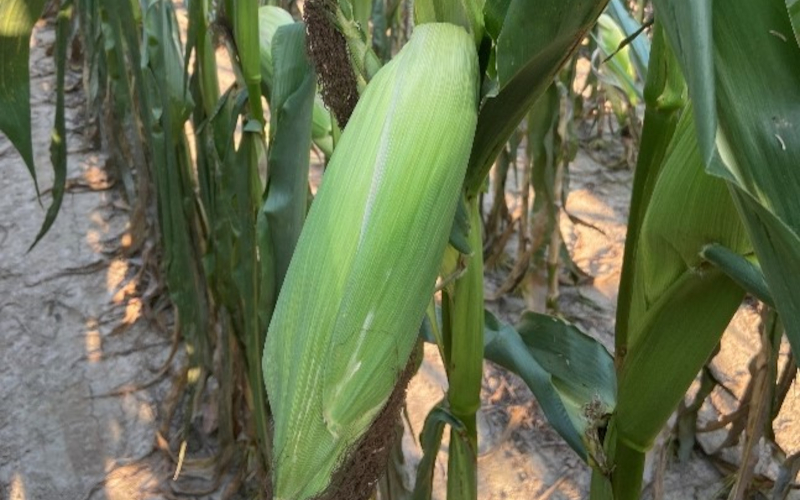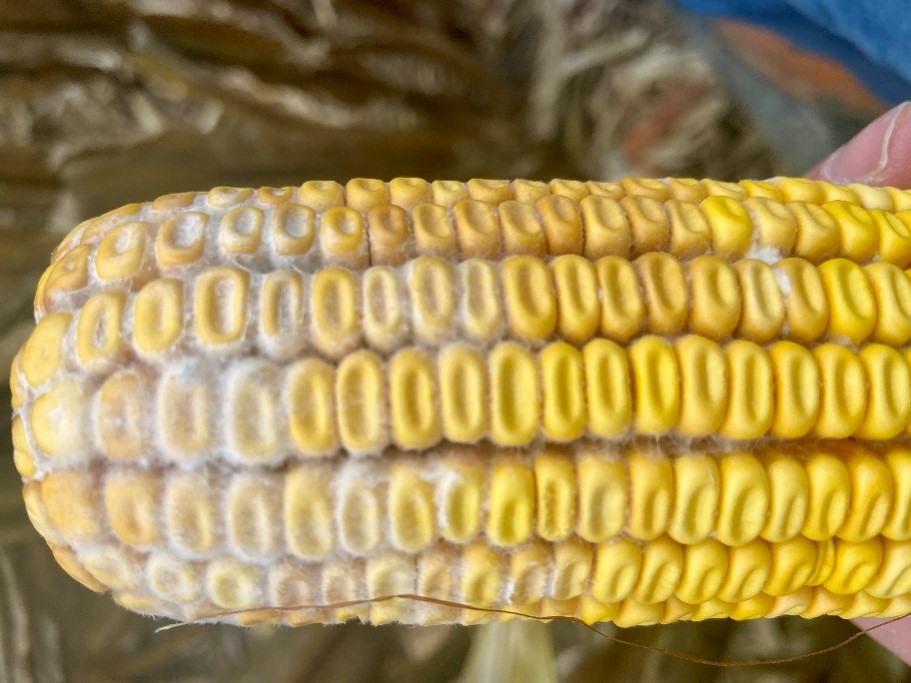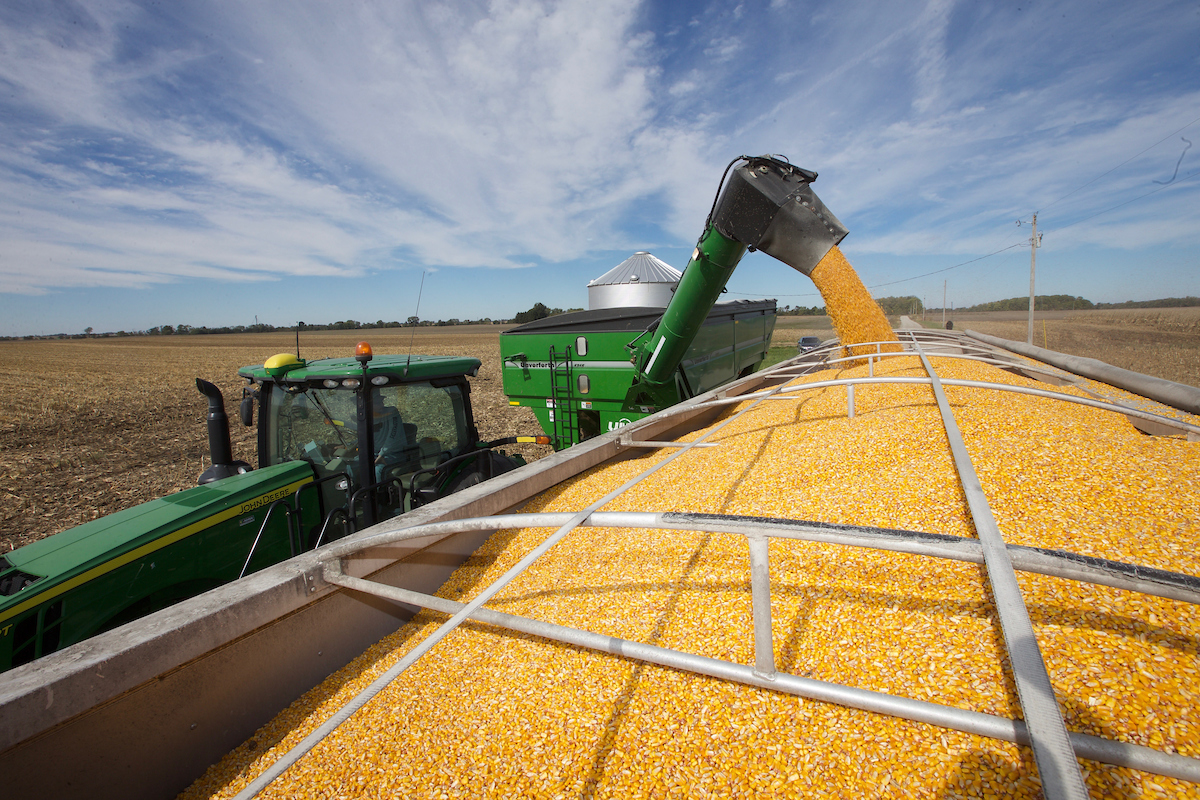Heat Stress and Drought Consideration for Corn
Max air temperatures for central and southern Indiana averaged 89- and 90-degrees F, respectively for the week of June 12th, 2022 which measured 10% above the 30-year average. In addition, air temperatures of 96-degrees F and above were observed during the week and record max air temperatures for this point in the season were observed in multiple locations across Indiana. Unfortunately, similar high temperatures are expected for the week of June 20th, combined with minimal chances for precipitation. Therefore, as high temperatures continue to persist and soils begin to dry out, this begs the question of what will happen to the corn crop? And, should I be concerned?
The good news is that corn originated from a tropical grass and has been observed to withstand temperatures upwards of 112-degrees F for short periods, with plant growth typically decreasing when temperatures exceed 95-degrees F (Thomison, 2016). Therefore, temperatures in the mid-90s during the afternoon typically do not impact corn photosynthetic capacity and yield if soil moisture is adequate. Overall, young corn in the vegetative growth stages is fairly tolerant to high temperatures and drought conditions. In addition, dry soil conditions early in the season can encourage deeper rooting of corn which will likely assist the corn plant with moisture access later in the season if the dry conditions persist. Deeper root systems allow the plant to access greater volumes of soil for increased moisture access.
The combination of hot, sunny days and increased drought stress in corn can limit the total water uptake of growing plants, thus resulting in reduced photosynthesis. Symptoms of drought stress include leaf rolling which is due to plants closing leaf stomates to limit the transpiration of moisture through the plants (Nielsen, 2020a). Although the attempt to limit transpiration of moisture can help a stressed corn plant, closed stomates can reduce plant photosynthesis due to reduced carbon dioxide accumulation (Nielsen, 2020). The earlier leaf rolling occurs in the day and the longer the duration of leaf rolling is observed, the more stress the plant is under, and the more potential yield loss can occur. Yield loss estimates have been previously quantified when drought stress and leaf rolling occur for four consecutive days or more (Table 1). Significant drought stress during vegetative growth can impact plant development and size and ear size potential (potential kernel number per row is more sensitive to environmental stress than kernel row number per ear). In addition, since dry soil conditions limit water uptake of a corn plant, these conditions can also limit nutrient uptake. For example, potassium deficiency is often observed under drought stress conditions.
Table 1. Corn percent yield loss per day estimates when drought stress for four or more consecutive days (Classen and Shaw, 1970; Rhoads and Bennet, 1990; Shaw, 1988, Licht and Archontoulis, 2017).
| Corn Growth Stage | Percent estimated yield loss per day of observed drought stress (%) |
| Early Vegetative Growth (VE - VE12) | 1-3 |
| Late Vegetative Growth (V12 - VT) | 2-5 |
| Pollination to Blister (R2) | 3-9 |
| Milk (R3) | 3-6 |
| Dough (R4) | 3-5 |
| Dent (R5) | 2-4 |
| Physiological Maturity (R6) | 0 |
As corn approaches maximum height and pollination, this is when the risk of yield loss due to heat and drought stress is the greatest. Corn water use increases from emergence to approximately the V15 growth stage where water use peaks through silking and pollination and until the R2 growth stage (blister) before decreasing (Table 2). Corn needs approximately 0.33 inches per day of water during peak demand and temperature, humidity level, and cloud cover can impact the total amount of daily water lost (Lee, 2022). Significant heat and water stress that occurs 7-10 days ahead of silking and throughout pollination can result in delayed silk emergence, reduced silk elongation, and silk desiccation. Once the tassel has emerged and pollen shed has begun, a corn plant will only shed pollen for approximately 7 days. Therefore, delayed silk emergence can cause poor synchrony of pollen shed with silk emergence and elongation, thus reducing kernel number and yield. In addition, extreme heat stress (> 100-degrees F) can kill pollen. However, pollen shed does not occur on one single day and peak pollen shed typically occurs in the morning when temperatures are lower (Nielsen, 2020b). The good news is that the corn crop in Indiana typically reaches 50% silking by mid-July, which means there is still time for the temperature to decrease and precipitation to increase during this critical time period.
Table 2. Average corn water use per day at specific growth stages and average total water use needed for each specific growth stage (Kranz et al., 2008; Jeschke, 2021).
| Growth Stage | Daily Water Use (in) | Total Water Needed per Growth State (in) |
| Emergence (VE) | 0.08 | 0.08 |
| 4-leaf (V4) | 0.10 | 1.8 |
| 8-leaft (V8) | 0.18 | 2.9 |
| 12-leaf (V12) | 0.26 | 1.8 |
| Early Tassel (R1) | 0.32 | 3.8 |
| Silking (R2) | 0.32 | 3.8 |
| Blister Kernel (R3) | 0.32 | 1.9 |
| Beginning Dent (R4) | 0.24 | 3.8 |
| Full Dent (R5.5) | 0.20 | 3.8 |
| Physiological Maturity (R6) | 0.10 | 1.4 |
Overall, corn is fairly tolerant to heat and drought conditions during early vegetative growth. However, if the heat and drought continue to persist and severe plant stress is observed, plant photosynthetic capacity and yield can be lost. Where heat and drought stress can become a significant problem is during pollination and silking. Therefore, it will be important to continue to monitor the weather and the corn crop throughout Indiana the next few weeks and maybe try out a few “rain dances” as we begin to approach some of the most critical growth stages in the life cycle of the corn plant.
References:
Classen, M.M., and R.H. Shaw. 1970. Water deficit effect on corn. II. Grain components. Agron. J.
Jeschke, M., 2021. How early season drought affects your corn crop. Pioneer Agronomy. https://www.pioneer.com/us/agronomy/early-season-drought-corn.html#:~:text=Corn%20is%20less%20susceptible%20to,of%20kernels%20on%20the%20ear
Kranz, W.L., S. Irmak, S.J. van Donk, C. Dean Yonts, and D.L. Martin. 2008. Irrigation management for corn. Bull. G1850. University of Nebraska-Lincoln Ext. https://extensionpublications.unl.edu/assets/html/g1850/build/g1850.htm#:~:text=In%20Nebraska%2C%20total%20corn%20water,24%20inches%20in%20the%20east.
Lee, C., 2022. Watch corn water use over the next few weeks. University of Kentucky Ext. https://www.kygrains.info/blog/2022/6/16/watch-corn-water-use-over-the-next-few-weeks
Licht, M., and S. Archontoulis. 2017. Influence of drought on corn and soybean. ICM News. Iowa State Univ. Ext. https://crops.extension.iastate.edu/cropnews/2017/07/influence-drought-corn-and-soybean
Nielsen, R.L. 2020a. Early season drought stress in corn. Corny News Network, Purdue Ext. https://www.agry.purdue.edu/ext/corn/news/timeless/EarlySeasonDroughtStress.html
Nielsen, R.L. 2020b. Tassel emergence and pollen shed. Corny News Network, Purdue Ext. https://www.agry.purdue.edu/ext/corn/news/timeless/tassels.html
Rhoads, F. M. and J.M. Bennett. 1990. Corn. In Stewart, B.A. and D.R. Nielsen (ed.). Irrigation of agricultural crops. p. 569-596. ASA-CSSA-SSSA, Madison, WI.
Shaw, R.H. 1988. Climate requirement. In Sprague, G.F. and J.W. Dudley (ed.). Corn and Corn Improvement. p. 609-638. ASA-CSSA-SSSA, Madison, WI.






